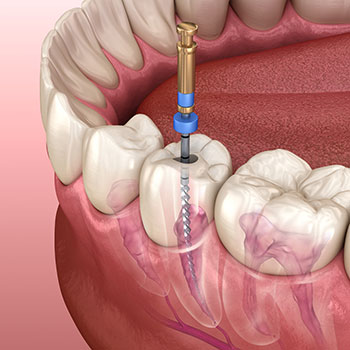 Root canal treatment, or endodontic treatment, is a procedure that salvages the structure of a damaged/decayed tooth by removing the infected pulp. This will prevent future infections. Many people believe that this procedure is painful, but most patients report feeling pain relief once the infection is removed.
Root canal treatment, or endodontic treatment, is a procedure that salvages the structure of a damaged/decayed tooth by removing the infected pulp. This will prevent future infections. Many people believe that this procedure is painful, but most patients report feeling pain relief once the infection is removed.
This is one of the standard procedures we do at Afroz Burges, D.D.S, P.A Family and Cosmetic Dentistry in Pearland. In this article, we’ll explain what root canal treatment is and the three stages involved in this procedure.
While many people use the term “root canal” to refer to the procedure, the procedure is actually known as endodontic therapy. The root canal is the part of the tooth that contains the pulp, which is the nerves, blood vessels, and other tissues. The pulp is what nourishes and moisturizes the surrounding tissues, as well as sensing hot/cold and pain.
When you have a deep cavity, loose filling, or crack in your tooth, bacteria can get inside the tooth. Eventually, the bacteria will destroy the pulp. Once the pulp is injured/diseased, it is no longer able to repair itself.
Over time, the infection will begin to break the jawbone down and the tooth will become loose. The tooth will be sensitive to extreme temps, and you may have pain when chewing. In some cases, you may have continuous throbbing pain.
If left untreated, the infection will spread, and the tooth will require extraction. If the affected tooth is causing a lot of pain, or cannot be restored, some patients will choose tooth extraction over other procedures. However, this isn’t always the best option because it can cause neighboring teeth to shift, which not only affects your smile but your bite and ability to chew and speak.
The team at Afroz Burges D.D.S, P.A. will always take steps to save the natural tooth when possible. Root canal therapy will allow us to salvage the structure of the tooth. If we are unable to salvage the tooth, the next best option would be to replace the tooth with a dental implant following extraction.
There are typically three stages of endodontic therapy, which may be completed within one visit, due to today’s technology.
The first step of this procedure is to clean out the tooth. The patient will be given local anesthesia to numb the area. Then, a small access hole is drilled into the surface of the tooth so that the dentist can remove the infected pulp.
Once the pulp has been removed, the dentist will clean, shape, and decontaminate it with tiny files and irrigation solutions and fill it with a rubbery material. Adhesive cement is used to seal the canal.
When this is done, the tooth is dead. Since the nerve tissue and blood vessels have been removed, you will no longer feel any pain or sensitivity with that tooth.
Since the pulp has been removed, the tooth is dead. It will now receive its nourishment from the ligament attaching the tooth to the bone. While the supply is adequate, the tooth will become more brittle over time without protection. A crown or filling will provide that protection.
Once this stage is complete, the tooth will function as before. However, you should avoid biting or chewing on this tooth until the crown or filling is complete.
In most cases, this entire procedure can be completed in one appointment. However, if the infection is large or the tooth has several canals or curved canals, it may take additional appointments.
Do you have a tooth that is infected, and you believe that you might benefit from root canal treatment? Schedule your consultation with the team at Afroz Burges D.D.S, P.A. Family and Cosmetic Dentistry today. We are located on Shadow Creek Parkway in Pearland. Our office hours are Monday through Thursday 8:00 AM to 5:00 PM and Friday 8:00 AM to 2:00 PM.